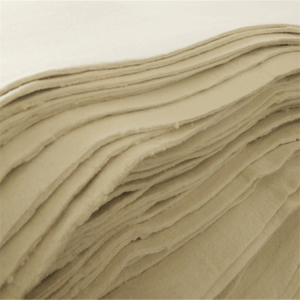The wool felt industry is undergoing a significant technological transformation, with new advancements streamlining production processes, improving product quality, and expanding the material’s potential applications.
Automation has made its mark in wool felt manufacturing. Modern automated machines can now perform tasks that were once labor – intensive and time – consuming. For instance, computer – controlled felting machines can precisely regulate the amount of pressure, temperature, and agitation during the wet felting process. This ensures a consistent quality of felt production, reducing the margin of error associated with manual labor. These automated machines can also produce wool felt in large quantities, meeting the growing demand in the market more efficiently.
3D printing technology is another innovation that is revolutionizing the wool felt industry. By using wool – based filaments, designers and manufacturers can create complex and customized wool felt structures. 3D – printed wool felt can be used in a variety of applications, from creating unique fashion accessories to architectural models. The technology allows for the production of intricate shapes and designs that would be extremely difficult, if not impossible, to achieve through traditional felting methods. This opens up new creative possibilities for artists, designers, and engineers working with wool felt.
In addition, advancements in dyeing and color – fastness technology have enhanced the aesthetic appeal of wool felt. Newer dyeing techniques ensure that wool felt retains its vibrant colors even after repeated use and washing. Moreover, digital color – matching systems enable manufacturers to produce wool felt in a vast array of shades and hues, closely matching the exact color requirements of designers and customers. This has made wool felt even more versatile in the fashion and home decor industries, where color – coordination is crucial.
The use of sensors and monitoring systems in wool felt production has also improved quality control. Sensors can detect variations in the thickness, density, and texture of the wool felt during the production process. This real – time monitoring allows manufacturers to make immediate adjustments, ensuring that the final product meets the desired specifications. By reducing the occurrence of defective products, these monitoring systems not only save costs but also enhance the reputation of wool felt brands.
Furthermore, research is underway to develop new types of wool felt with enhanced properties. Scientists are exploring ways to incorporate nanomaterials into wool felt to improve its strength, water – repellency, and antimicrobial properties. These new – generation wool felt materials could have applications in various sectors, such as healthcare, sports, and aerospace.

Post time: May-30-2025
